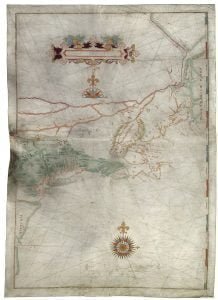Letter from Rev. William Hall to Henry R. Schoolcraft
Letter from Rev. William Hall to Henry R. Schoolcraft Allegany Mission, Sept. 8th, 1845 DEAR SIR: Your inquiries in relation to the state of religion, education, &c., among the Indians of this reservation, if I rightly understand them, are briefly answered as follows: Christianity very much prospered here during the four years next preceding the past. The number of church members during that period, was nearly tripled, and very encouraging additions were made to their know ledge and zeal. But the past year has been one of stupidity and drought. There has, however, been four additions from the Indians, made … Read more

![Letter from S. A. Goodwin to Henry R. Schoolcraft 1 Diagram of an ancient fortification on Fort Hill, Auburn, N. Y. [Senate, No. 24.] 31](https://accessgenealogy.com/wp-content/uploads/2012/05/page241-273x300.jpg)
